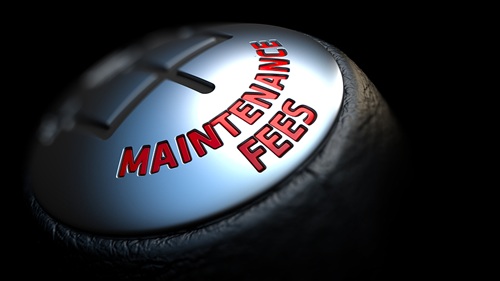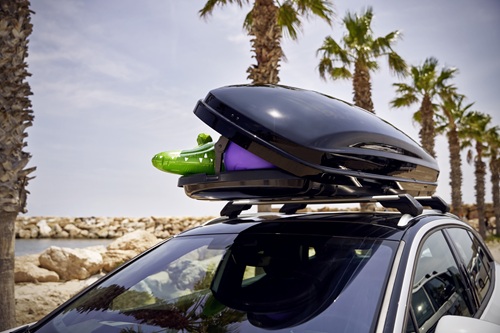Discover ten evidence-based ways Irish drivers can lower emissions, save fuel, and make eco-friendly driving part of everyday life with MotorCheck IE.
According to Ireland’s Environmental Protection Agency (EPA), the transport sector accounts for almost 20% of national greenhouse gas emissions, a figure that continues to rise as car ownership increases. While electric vehicles are growing in popularity, most Irish drivers still rely on petrol and diesel cars for daily travel. The good news is that small, consistent changes in how we drive, maintain, and choose our vehicles can make a measurable difference. Here are ten practical, evidence-based tips to help Irish drivers reduce their carbon footprint without sacrificing convenience or comfort.
1. Drive Smoothly and Anticipate Traffic
Your driving style has the biggest impact on fuel consumption. Research from the Sustainable Energy Authority of Ireland (SEAI) shows that smooth acceleration and braking can reduce fuel use by up to 30%. By anticipating traffic flow and avoiding harsh acceleration or braking, you not only save fuel but also improve road safety. Think of eco-driving as defensive driving: calm, predictable, and efficient.
2. Maintain an Efficient Speed
Staying within speed limits and avoiding unnecessary high-speed driving makes a measurable difference.
According to research using the European Environment Agency’s COPERT model, fuel consumption increases progressively with higher speeds, particularly beyond 100 km/h, due to greater aerodynamic drag and engine load.
Guidance from SEAI also notes that maintaining moderate speeds can improve fuel economy and lower emissions. Using cruise control on long motorway journeys helps keep a steady pace, reducing unnecessary acceleration that wastes energy.
3. Cut Down on Idling
Leaving your engine running while waiting can waste fuel and increase emissions. If you’re stopped for more than 60 seconds, switch off the engine. Modern engines are designed to restart efficiently, and reducing idle time can save up to €100 in annual fuel costs for the average Irish driver.
4. Keep Your Tyres Properly Inflated
Tyre pressure is a small detail with a big impact. Under-inflated tyres increase rolling resistance, forcing your engine to work harder. The Road Safety Authority (RSA) advises checking tyre pressure at least once a month. Keeping tyres at manufacturer-recommended levels can improve fuel efficiency by up to 3% and enhance braking performance.
5. Keep Up with Regular Servicing

A well-maintained engine produces fewer emissions and runs more efficiently. Regular servicing ensures that components such as air filters, spark plugs, and fuel systems are operating as intended. Using the correct motor oil and adhering to the manufacturer’s service schedule help maintain optimal performance and reduce fuel waste. The SEAI advises that routine maintenance is essential for keeping vehicles energy-efficient and environmentally responsible. Beyond reducing emissions, regular servicing extends your vehicle’s lifespan and protects its value. According to our MotorCheck research, a car with a complete service history can be worth over €1,000 more at trade-in, a practical gain for both your wallet and the planet.
6. Reduce Vehicle Weight

Extra weight means your engine has to work harder, especially during acceleration or on hilly routes. Removing unnecessary items from your boot and detaching roof racks or boxes when not in use can noticeably improve efficiency. The European Environment Agency notes that heavier vehicles require more energy to move and therefore emit more CO₂ per kilometre. Even modest reductions in load can lower fuel consumption and extend the lifespan of components such as brakes and tyres over time.
7. Plan and Combine Your Journeys
Smart trip planning saves both time and fuel. Combining errands into a single journey, using route-planning apps to avoid congestion, and travelling outside peak hours all help reduce fuel use. Fewer kilometres driven mean fewer emissions overall, even modest reductions in mileage can make a measurable impact. Choosing to carpool, share school runs, or work from home occasionally are simple ways Irish motorists can cut their carbon footprint without major lifestyle changes.
8. Use Air Conditioning Strategically
Using air conditioning places additional load on your engine, which increases fuel consumption. According to the UK’s Department for Transport and vehicle efficiency studies, this rise typically ranges between 5% and 10% under normal driving conditions, with greater increases in heavy traffic or hot weather. To stay efficient, use your car’s ventilation system or open windows at lower speeds, and park in shaded areas to reduce heat build-up. On motorways, moderate use of air conditioning is usually more efficient than driving with windows open, which creates aerodynamic drag and raises fuel use.

9. Choose an Electric or Efficient Vehicle
Switching to an electric vehicle (EV) is one of the most effective ways to cut driving emissions and costs. Electric vehicles can produce zero tailpipe emissions and can more than halve overall CO₂ output compared to petrol or diesel cars. For drivers who can charge at home, the savings are significant, an average motorist covering 14,000 km per year could reduce annual energy costs from about €1,400 in fuel to under €300 in electricity. Charging at night also supports Ireland’s renewable energy mix by using surplus wind power, making EVs both economical and environmentally beneficial.
10. Check Your Vehicle’s History with MotorCheck IE
Understanding your car’s full history helps you make informed decisions about maintenance and emissions. A vehicle that has missed services or sustained damage may perform less efficiently. Industry experts recommend conducting a comprehensive vehicle history check to confirm mileage accuracy, service records, and past ownership. Get your MotorCheck report to ensure your vehicle is performing at its best or to make an informed decision when buying a more eco-friendly car.
Driving Change: The Road to Lower Emissions
Every small change makes a difference. From smoother driving and regular maintenance to smarter trip planning, each action helps cut emissions and save money. Ireland’s progress toward cleaner transport depends not only on national policy but on the everyday choices of drivers. Start today with these ten simple habits and for added confidence in your vehicle’s efficiency, get a comprehensive MotorCheck report to understand its full history.
Your Questions Answered: Reducing Emissions When Driving
What is the biggest way to reduce my carbon footprint when driving?
The single most effective way to lower your carbon footprint when driving is to adjust your driving style. Smooth acceleration, gentle braking, and maintaining steady speeds can reduce fuel use by 15–30%, according to the SEAI. Planning routes in advance, combining errands into one trip, and avoiding unnecessary journeys can further cut emissions while saving money on fuel.
Is it better to repair my old car or buy a newer, more efficient one?
Whether to repair or replace depends on your car’s age, condition, and emissions. Manufacturing a new vehicle creates substantial carbon output, but older cars with inefficient engines and frequent repair needs may emit more over time. If your vehicle is over ten years old and poorly maintained, upgrading to a hybrid or electric model may be the more environmentally responsible choice especially given Ireland’s expanding EV incentives and renewable energy mix.
Does checking my vehicle’s history help reduce my carbon footprint?
Yes. Checking your vehicle’s history helps identify maintenance gaps, mileage discrepancies, and previous issues that could affect efficiency and emissions. A MotorCheck report provides verified data on service history and past ownership, enabling you to make informed, eco-conscious decisions about repairs, upgrades, or replacements ultimately helping reduce your car’s environmental impact.